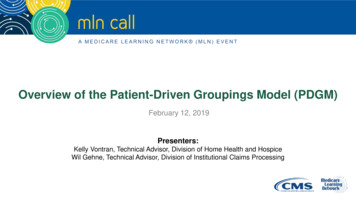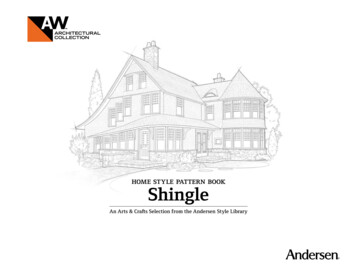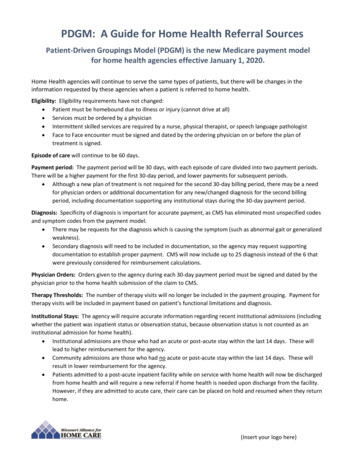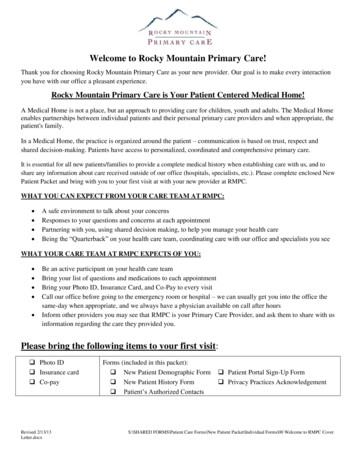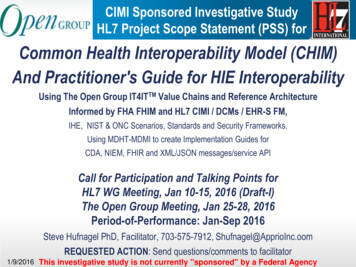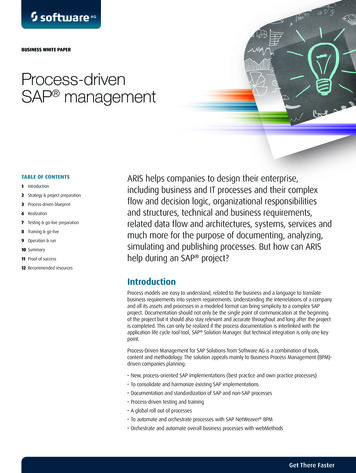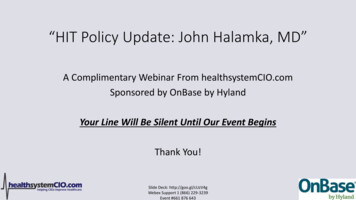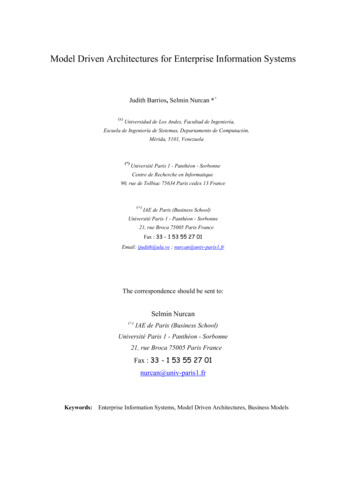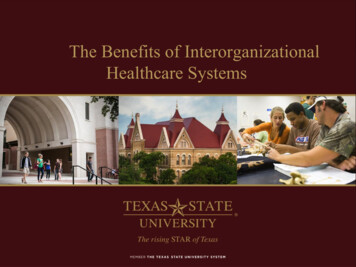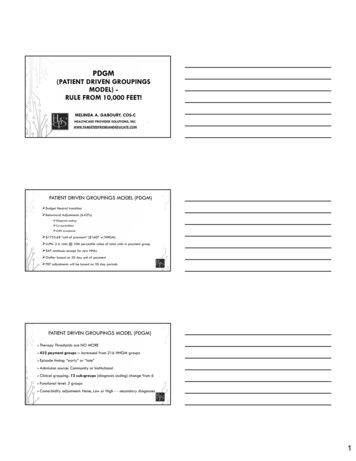
Transcription
PDGM(PATIENT DRIVEN GROUPINGSMODEL) RULE FROM 10,000 FEET!MELINDA A. GABOURY, COS-CHEALTHCARE PROVIDER SOLUTIONS, INC.1WWW.TARGETEDPROBEANDEDUCATE.COMPATIENT DRIVEN GROUPINGS MODEL (PDGM) Budget Neutral transition Behavioral Adjustments (6.42%) Diagnosis coding Co-morbidities LUPA avoidance 1753.68 “unit of payment” ( 1607 w/HHGM) LUPA: 2‐6 visits @ 10th percentile value of total visits in payment group RAP continues except for new HHAs Outlier based on 30 day unit of payment PEP adjustments will be based on 30 day periodsPATIENT DRIVEN GROUPINGS MODEL (PDGM) Therapy 432Thresholds are NO MOREpayment groups – increased from 216 HHGM groups Episodetiming: “early” or “late” Admission Clinicalsource: Community or Institutionalgrouping: 12 sub-groups (diagnosis coding) change from 6 Functionallevel: 3 groups Comorbidityadjustment: None, Low or High - - secondary diagnoses1
PATIENT DRIVEN GROUPINGS MODEL (PDGM) Admission Source & Timing (Claims) - (Community Early, CommunityLate, Institutional Early or Institutional Late) Only the first 30-day period will be considered Early and all others late.Similar to the current PPS model, the payment period could only beconsidered Early if great than 60 days has passed since the end of aprevious period of care. IMPORTANT - - However, if a patient experiences a significant change incondition before the start of a subsequent, contiguous 30-day period, forexample due to a fall; a follow-up assessment would be submitted at thestart of a second 30-day period to reflect any changes in the patient’scondition, including functional abilities, and the second 30-day claim wouldbe grouped into its appropriate case-mix group accordinglyPATIENT DRIVEN GROUPINGS MODEL (PDGM)Admission Source & Timing (Claims) - (Community Early, CommunityLate, Institutional Early or Institutional Late) Admission Source will be Community or Institutional – depending on thehealthcare setting utilized in the 14 days prior to home health (inpatient acutecare hospitalization, skilled nursing facilities, inpatient rehabilitation facility,psychiatric or long term care hospital) IMPORTANT:A post-acute stay (SNF, Rehab, LTCH, or Psych) in the 14 daysprior to a late home health 30-day period would not be classified as aninstitutional admission unless the patient had been discharged from home6health prior to post-acute stay2
PATIENT DRIVEN GROUPINGS MODEL (PDGM)Clinical Grouping (Primary Diagnosis) –NEW - - Medication Management, Teaching and Assessment (MMTA) MMTA – Surgical Aftercare MMTA – Cardiac/Circulatory MMTA – Endocrine MMTA – GI/GU MMTA – Infectious & Blood-forming Diseases/Neoplasms MMTA – Respiratory MMTA – Other7PATIENT DRIVEN GROUPINGS MODEL (PDGM)Clinical Grouping (Primary Diagnosis) – Neuro Rehab, Wounds, Complex Nursing Interventions, Musculoskeletal (MS) Rehab, Behavioral HealthPATIENT DRIVEN GROUPINGS MODEL (PDGM) Functional Level (OASIS Items) – (Low, Medium, High) Anticipates roughly 33% of periods of care will fall intoeach of the categories. M1800-M1860 and M1033 are OASIS-C2 Itemsproposed for use in determining Functional Level underHHGM.3
OASIS Points TableVariableM1800: GroomingM1810: Current Ability to Dress Upper BodyM1820: Current Ability to Dress Lower BodyM1830: BathingM1840: Toilet TransferringM1850: TransferringM1860: Ambulation/LocomotionM1033: Risk of HospitalizationResponseCategory Responses Points12, 3412, 312231223, 435, 612, 3, 4112 2, 3, 4, 5122334, 5, 64 or moreitemschecked From 1‐7MMTA ‐ Surgical AftercareMMTA ‐ Cardiac and CirculatoryMMTA ‐ EndocrineMMTA ‐ Gastrointestinal tract and Genitourinary systemMMTA ‐ Infectious Disease, Neoplasms, and Blood‐Forming DiseasesMMTA ‐ RespiratoryMMTA ‐ OtherBehavioral HealthComplex Nursing InterventionsMusculoskeletal RehabilitationNeuro HighLowMediumHighLowMediumHigh0‐2425‐3738 0‐3637‐5253 0‐5152‐6768 0‐2728‐4445 0‐3233‐4950 0‐2930‐4344 0‐3233‐4849 LowMediumHighLowMediumHighLow0‐3637‐5253 0‐3839‐5859 3 0‐4445‐6061 0‐4243‐6162 4
PATIENT DRIVEN GROUPINGS MODEL (PDGM) Low comorbidity adjustment: There is a reported secondarydiagnosis that falls within one of the home-health specific individualcomorbidity subgroups associated with higher resource use, or; High comorbidity adjustment: There are two or more secondarydiagnoses reported that fall within the same comorbidity subgroupinteraction that are associated with higher resource use.LUPA THRESHOLDSVariable thresholds based on Case Mix Grouping (HHRG) Different level for each of the 432 Case Mix Groupings – ranges between 2 - 6visits. Based on 30 day payment periods – NOT 60 day episodes Utilize 10th percentile value of visits for each threshold LUPA reimbursement is per visit (as prior PPS)LUPA THRESHOLDS5
LUPA THRESHOLDSBY CLINICAL GROUPPATIENT DRIVEN GROUPINGS MODEL (PDGM) OASIS Accuracy is crucial for: Functional Levels that impact resource use Quality Outcomes Coding Accuracy is crucial for: Determining correct primary dx Determining co-morbidity Avoiding use of codes that are not grouped and time needed to determineappropriate HH code Therapy Begin now to evaluate therapy practices 2020 is too late. More PTAs – less PTs might be a possibility6
Melinda A. Gaboury, COS-CChief Executive OfficerHealthcare Provider Solutions, Inc.810 Royal Parkway, Suite 200Nashville, TN 37214615-399-7499 Phone615-399-7790 dprobeandeducate.com7
Neuro Rehab, Wounds, Complex Nursing Interventions, Musculoskeletal (MS) Rehab, Behavioral Health PATIENT DRIVEN GROUPINGS MODEL (PDGM) Functional Level (OASIS Item s) - (Low, Medium, High) Anticipates roughly 33% of periods of care will fall into each of the categories. M1800-M1860 and M1033 are OASIS-C2 Items
